RIYADH: Live music, painting, food trucks and hordes of wildlife lovers hit the streets in Saudi Arabia — and at events across the world — for the inaugural “Catwalk,” organized by Saudi-led nonprofit Catmosphere on Saturday.
Participants and volunteers gathered at the starting line of the 7 km walk to show their support for, and raise awareness about, the living conditions of the seven big cats the organization supports, including at an event in Riyadh’s Al-Ammariya.
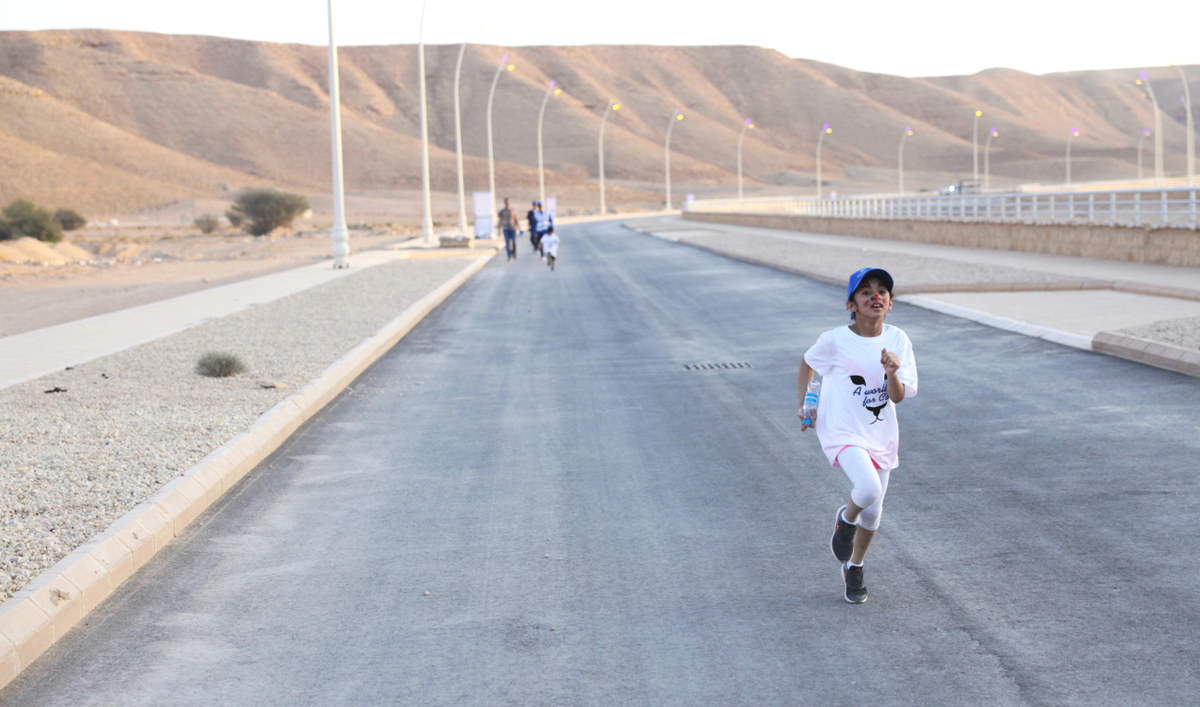
Catmosphere’s ‘Catwalk’ kicked off in Saudi Arabia on Nov. 6 with over 10,000 volunteers to help raise awareness about endangered big cat species. (AN photo)
Catmosphere was launched by Princess Reema bint Bandar Al-Saud, Saudi Arabia’s ambassador to the US, who is on a mission to safeguard the lives and wellbeing of big cats. The nonprofit aims to magnify the efforts of Panthera, a US-based charity devoted to the conservation of 40 species of wild cats.
Catmosphere focuses on lions, tigers, cheetahs, jaguars, pumas, leopards and snow leopards.
With the walks open to the public, Princess Reema previously told Arab News: “‘Catwalk’ is striving for a healthy habitat for big cats, and healthy habitats start at home. A healthy and active lifestyle helps us respect our own bodies, and engaging with our environment gives us an appreciation for the fundamental role it plays in all of life. ‘Catwalk’ invites us all to ignite physical movement locally, and in doing so trigger the big cat conservation movement globally.”
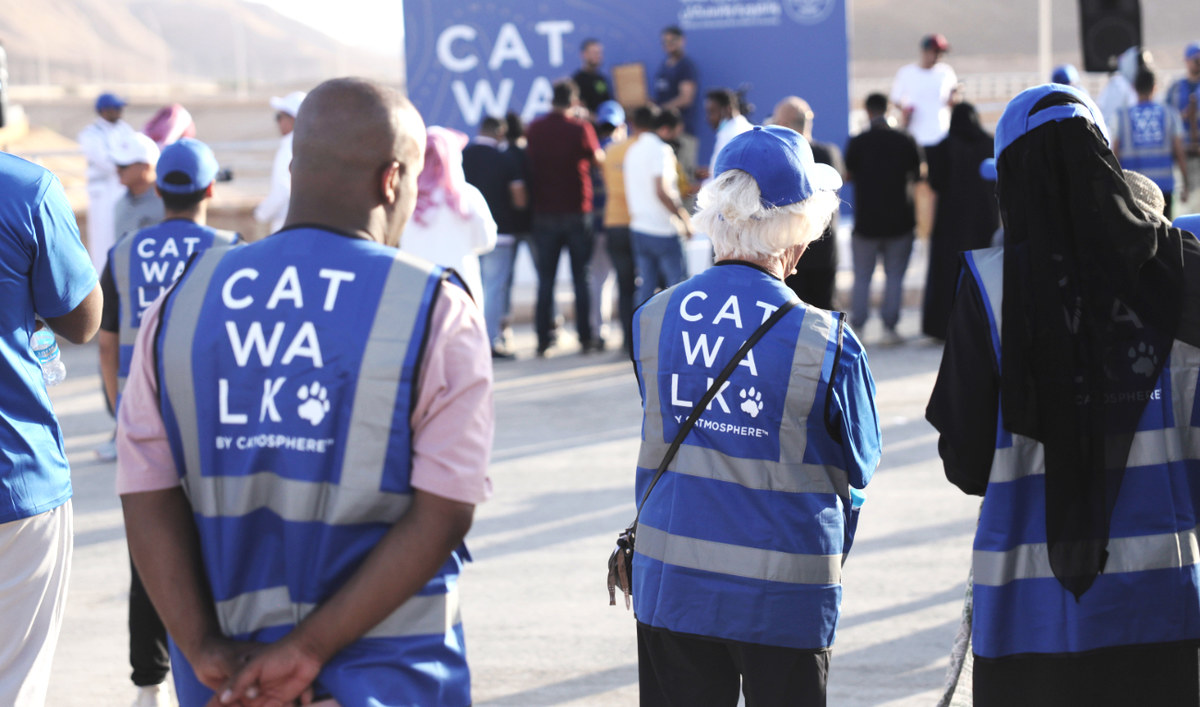
Saudi families gathered on Nov. 6 to take part in the ‘Catwalk’, a 7 km outdoor walk to promote efforts to protect endangered big cats and their ecosystems. (AN photo)
Walkers and runners kicked off around the world on Nov. 6, with organizers reporting 10,000 participants in Saudi Arabia alone. Those who signed up to take part could do so individually, in groups or as part of a company-organized event.
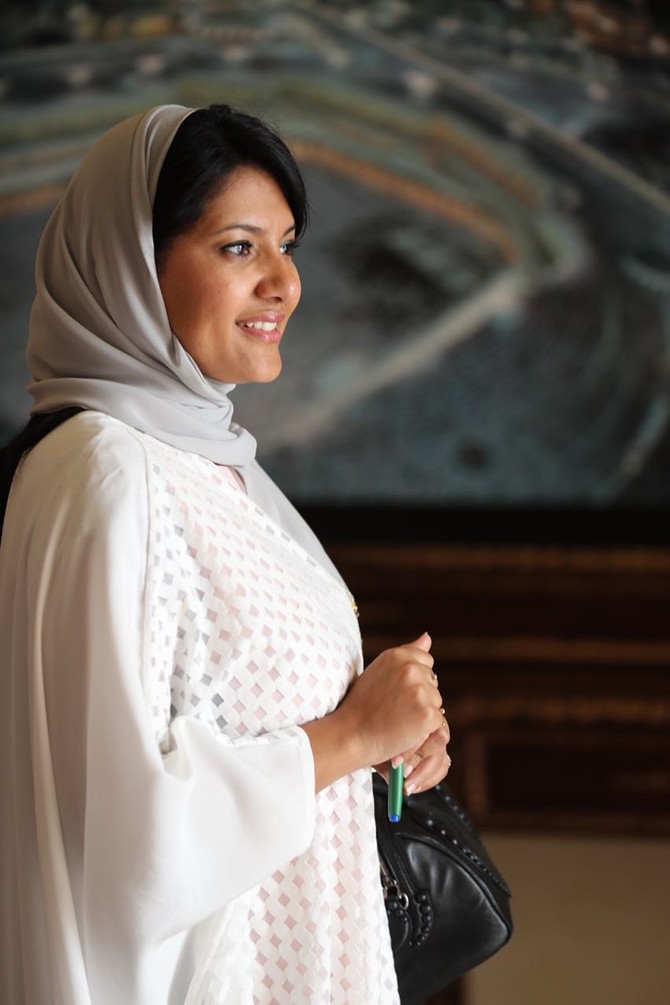
Catmosphere, founded by Ambassador to US Princess Reema bint Bandar Al-Saud, supports big cat species worldwide
Abdullah Abdulrahman bin Saeed, the deputy minister of municipal and rural affairs and housing, kicked off the walk in Al-Ammariya with a speech that thanked the crowd for their involvement.
“We thank everybody for coming here today to raise awareness about this important initiative that was started by her royal highness, Princess Reema,” he said.
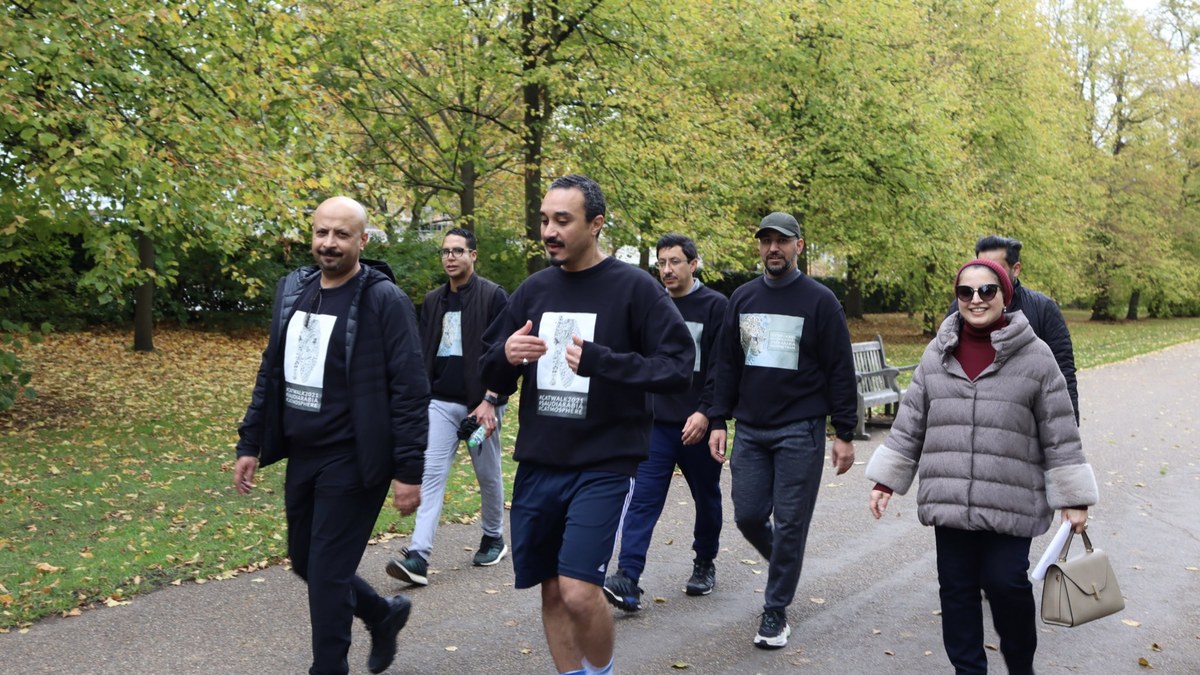
Khalid bin Bandar, Saudi ambassador to UK, taking part in Catwalk in London. (Social media)
“We have initiated 30 locations around the Kingdom … and right now we have over 10,000 volunteers registered, from Saudis to non-Saudis, who are participating today to raise awareness about this initiative,” the deputy minister added.
Prince Abdulaziz bin Turki Al-Faisal, the Saudi minister of sport, Waleed Abdulkarim Elkhereiji, the deputy minister of foreign affairs, Faisal Al-Ibrahim, the minister of economy and planning, Khalid bin Bandar, Saudi ambassador to UK, and Saad Mohammed Alarify, head of the Saudi mission to the EU, also participated in the walk.
“The event is international — we have Princess Reema participating in Washington, there are people participating from Copenhagen, Egypt, throughout Europe — so it’s a global event.”
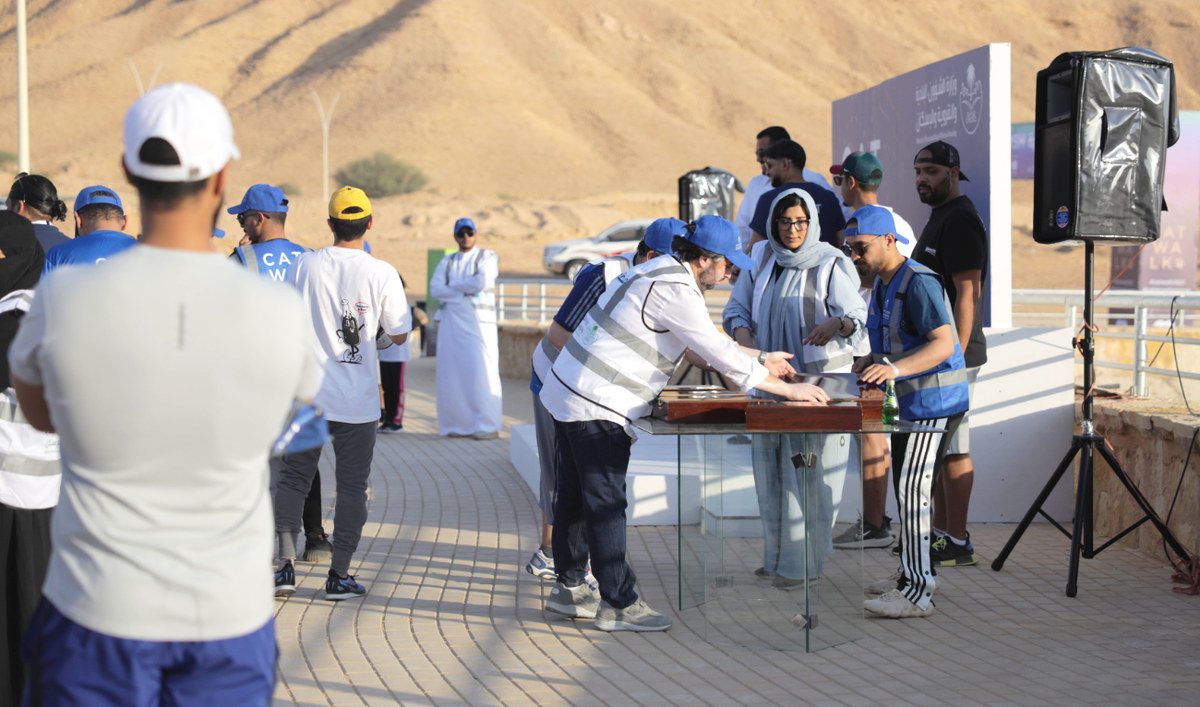
Catmosphere’s ‘Catwalk’ kicked off in Saudi Arabia on Nov. 6 with over 10,000 volunteers to help raise awareness about endangered big cat species. (AN photo)
One walker, named Abdulaziz, told Arab News: “It’s honestly an amazing experience, and I am happy I was able to be here and to express my feelings for the tiger to help endangered species.”
In addition to animal-loving adults participating, organizers also made sure to offer a shorter trek called the “Catwalk Cub” — a 700-meter dash — for children to show their support.
One of the young participants was 11-year-old Mohammed, who revealed that he was walking in support of big Arabian cats.
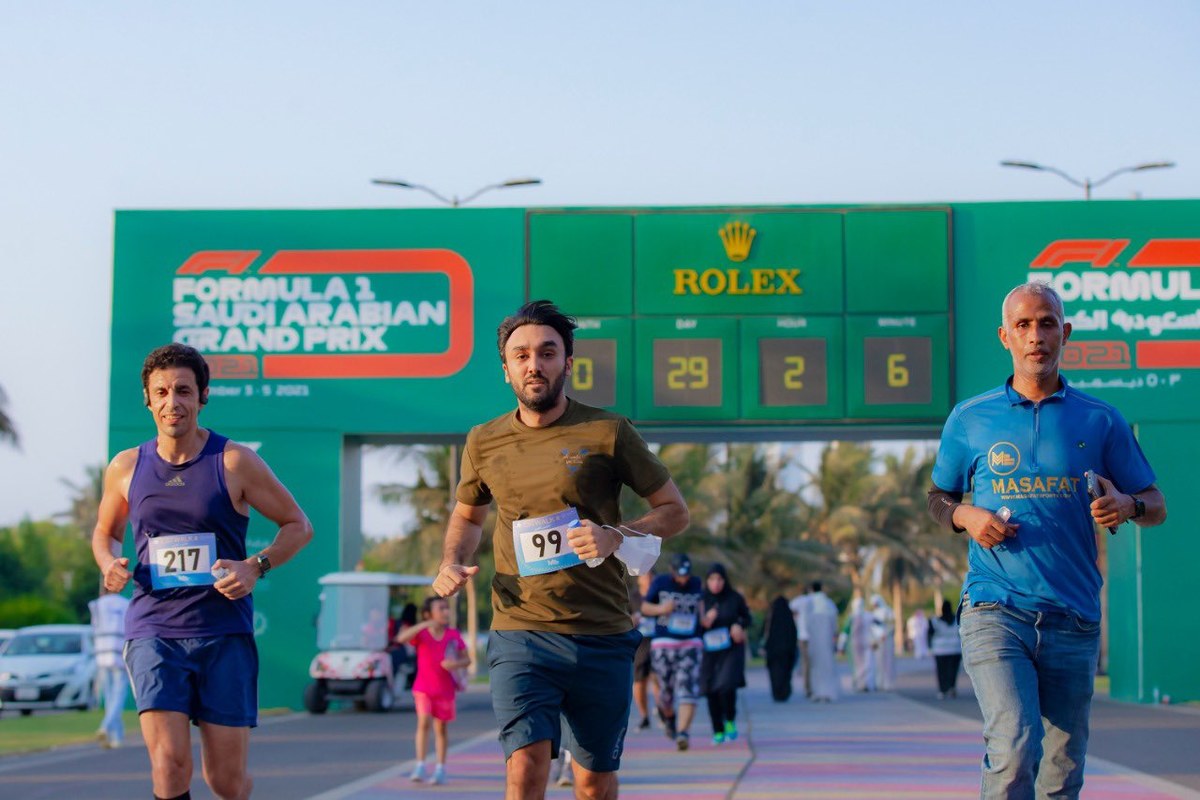
Prince Abdulaziz bin Turki Al-Faisal, the Saudi minister of sport, also took part in Catwalk. (Social media)
While it was a family affair for Mohammed, who joined in with his siblings, other participants were quick to praise the community spirit behind the event, too.
“A good friend of ours recommended this place and we thought it would be a wonderful event — it is a great cause and a great place to do it in, a great place for getting to meet new people and having a chat,” participant Anthony Di Rosa told Arab News.
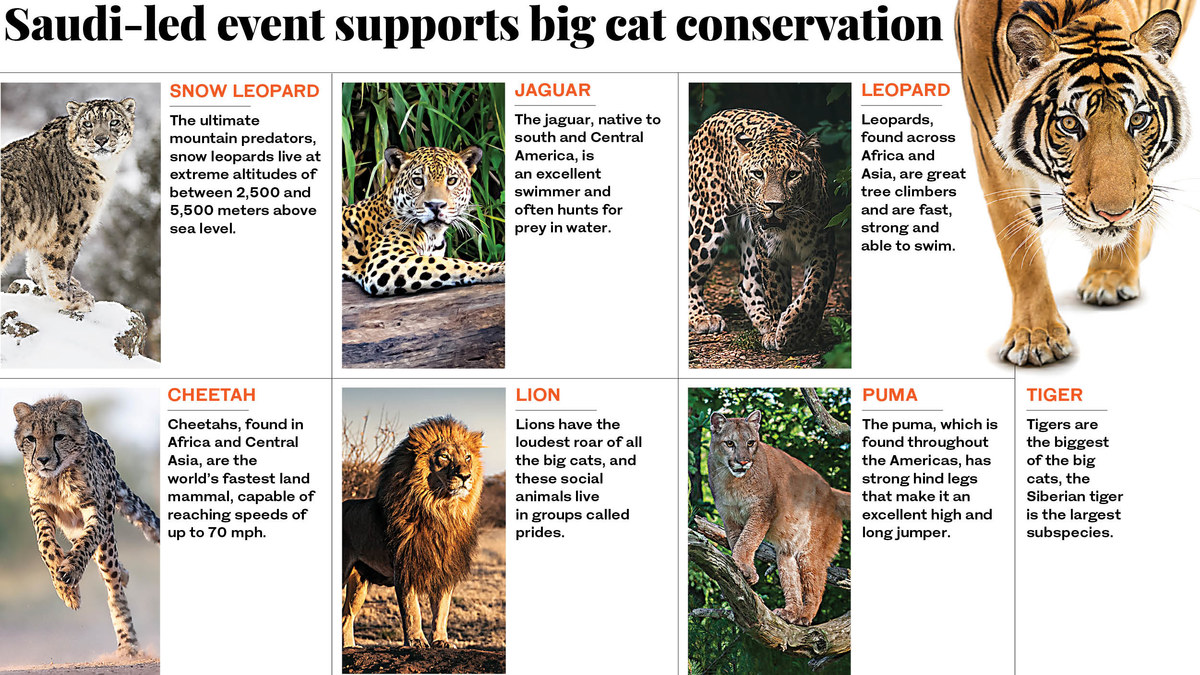
“I am so glad to see a lot of people volunteering to run for 7 km — it is such a great experience. I would like to share with people all around the world, we are here and we are supporting this kind of initiative to protect all wildlife,” social media influencer Muhanad Alhassoun told Arab News.
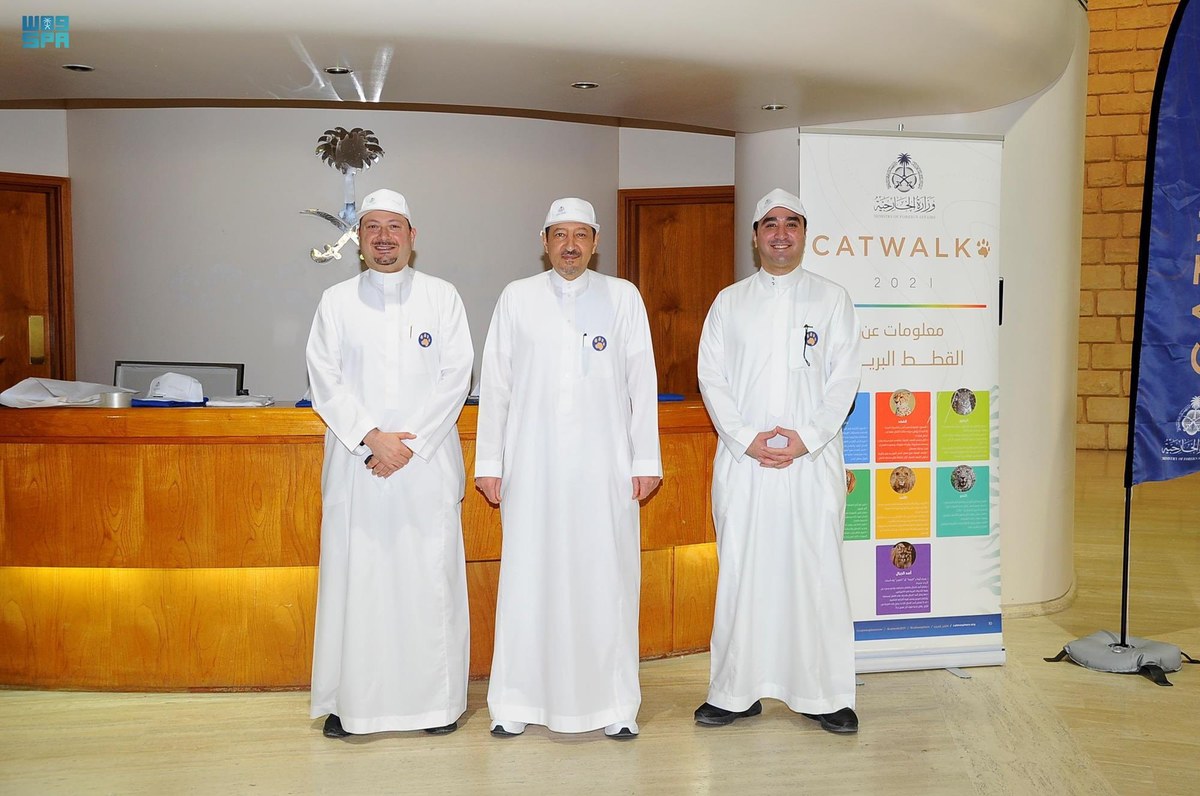
Waleed Abdulkarim Elkhereiji, deputy minister of foreign affairs, participated in Catwalk. (SPA)
“The aim of this walk is to protect wildlife … we are building the community and environment and we need to protect it,” he added.
His sober statement echoed warnings by Panthera that important species are threatened by habitat loss, with the tiger, lion, leopard and cheetah having lost between 65 percent and 96 percent of their historical populations.
“The reality of the pandemic and the experience that the whole world has just had of separation and isolation from human communities due to COVID-19 is very much what was done to the big cats when we cut off their territorial corridors and isolated them from their natural habitats in nature,” Princess Reema said about the destruction of big cat environments.
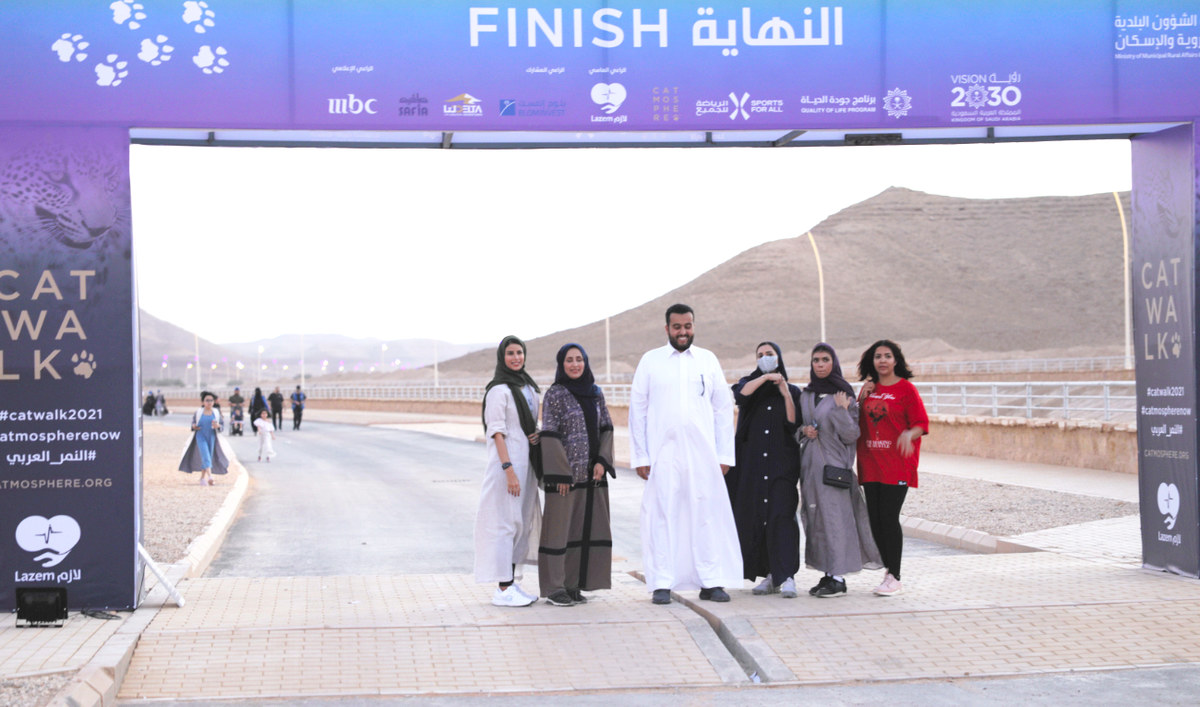
Saudi families gathered on Nov. 6 to take part in the ‘Catwalk’, a 7 km outdoor walk to promote efforts to protect endangered big cats and their ecosystems. (AN photo)
“Just as we have seen that impact on us, imagine what that impact has been on them. ‘Catwalk’ is hoping to highlight a very simple fact: That our collective wellbeing is interconnected, and so it is incumbent on all of us to operate through empathy and provide spaces that we as humans would want to live and thrive in, and ensure the same for big cats,” she added.
And while the general public at the event in Riyadh seem to have taken that message to heart, public officials also took to Twitter to show their support. Saudi Arabia’s ambassador to Spain, Azzam Al-Qain, thanked Arab countries for their participation.
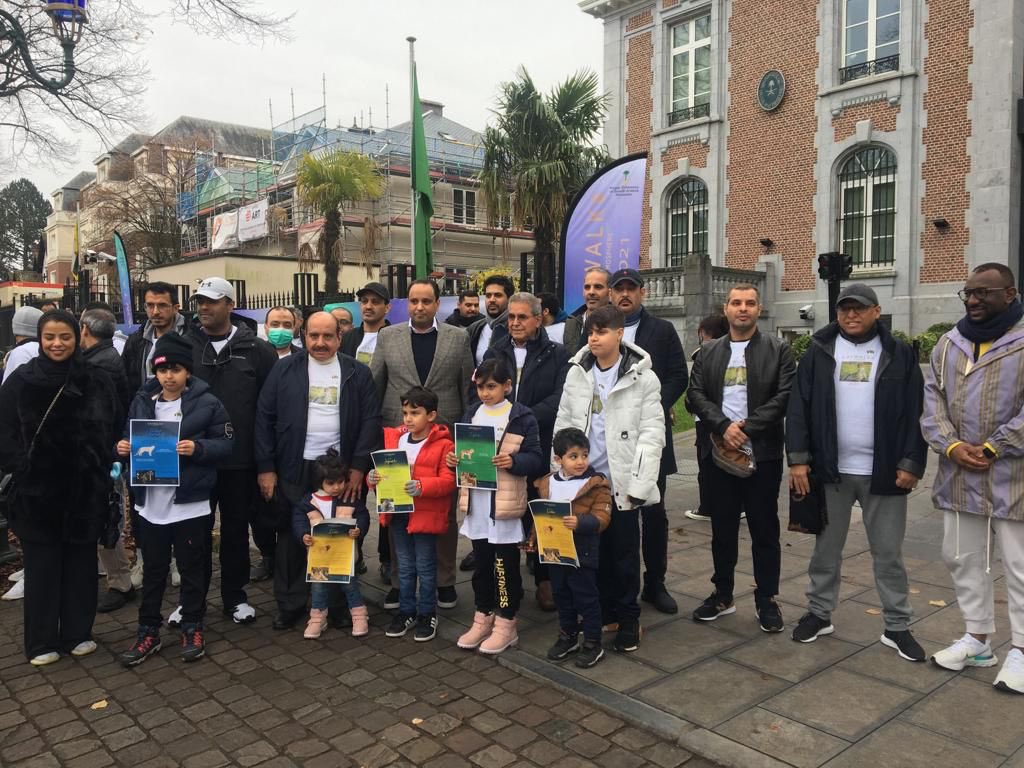
Saad Mohammed Alarify, head of the Saudi mission to the EU, poses for a group photo at the Catwalk event in Brussels. (Social media)
“Thank you from the bottom of the heart to all the brothers and sisters, the ambassadors of the accredited Arab countries, the Libyan school and its staff, the mayor of Madrid and the Rotero Park officials for your active participation in the event. Together we save endangered cats,” he wrote.
From Riyadh to the cooler climes of Europe, walkers were out in full force — and participants in AlUla staged a special event in support for the Arabian leopard.
AlUla’s walk took place in the protected Sharaan Nature Reserve, where residents, visitors and staff from the Royal Commission for AlUla gathered to show their support for the critically endangered big cat, with fewer than 200 thought to be living in the wild.
The RCU has already committed $25 million to the Arabian Leopard Fund, an independent organization launched by the commission to work across the leopard’s home range to save the species.

















































